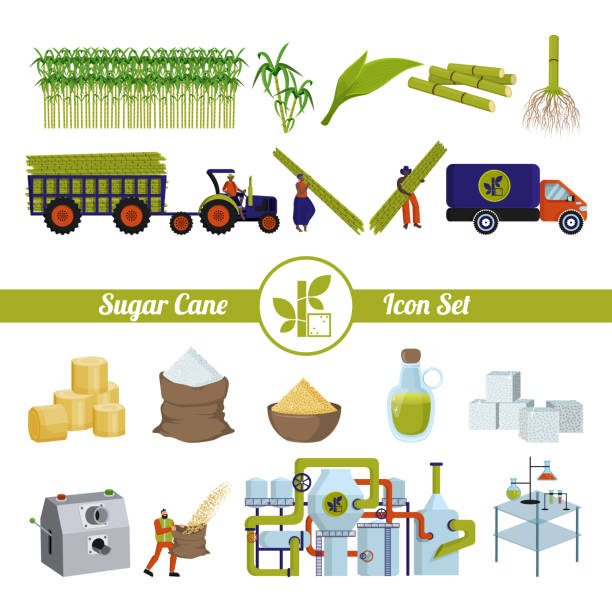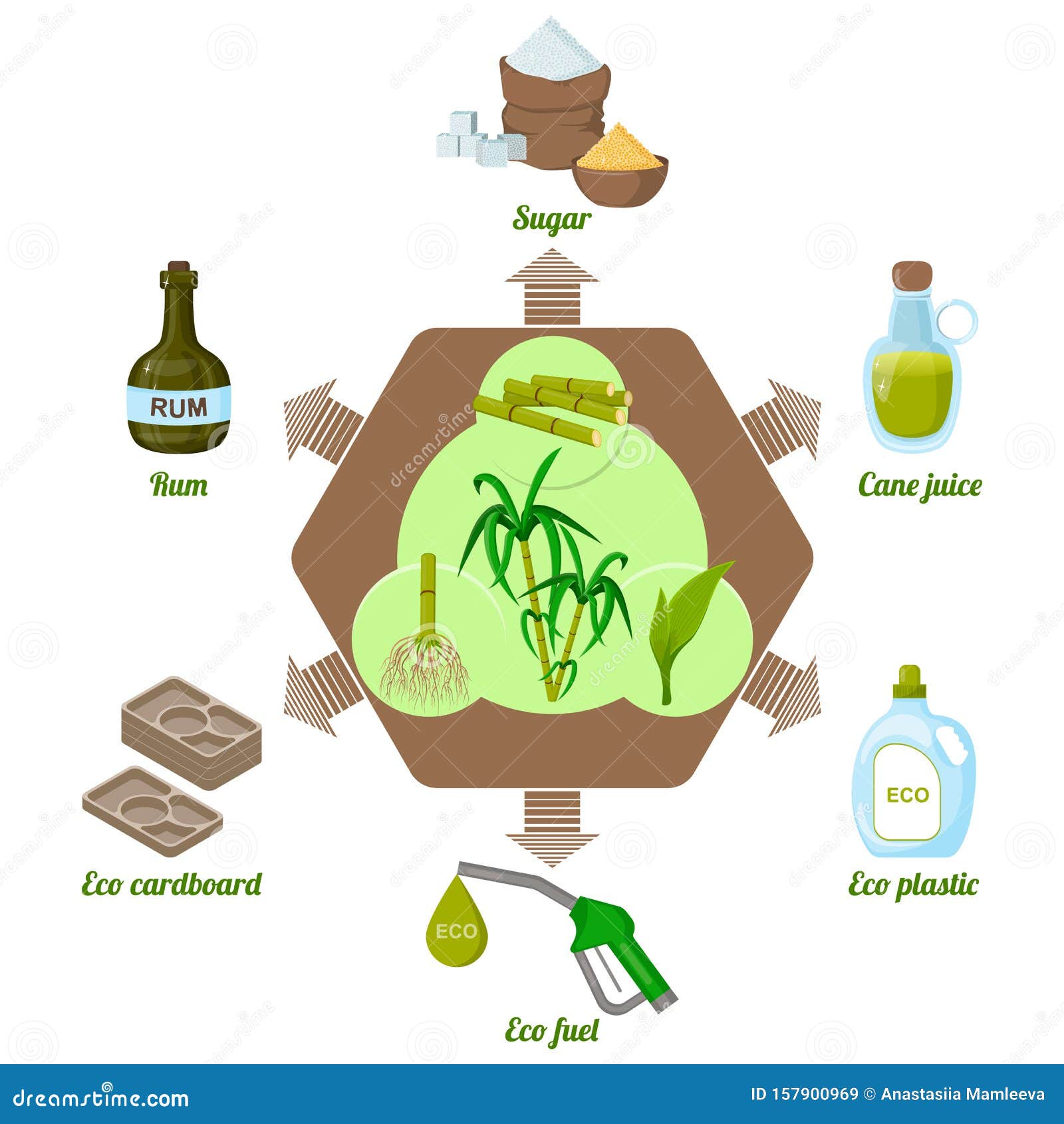Are sugar cane products Offer Health Benefits? Discover the Facts
Discover All Concerning Sugar Cane: From Production Strategies to Item Innovations
Sugar cane is a plant with both historic significance and modern importance. Its growing has actually evolved from typical techniques to contemporary practices that satisfy today's farming demands. This development consists of cutting-edge handling techniques that transform the cane right into a variety of products. As the industry encounters environmental difficulties, brand-new lasting methods are arising. The intricacies of sugar cane production and its future in worldwide markets present intriguing concerns worth checking out better.
The History of Sugar Cane Cultivation
Although sugar cane is typically connected with tropical climates, its cultivation has an abundant background that dates back countless years. Coming From Southeast Asia, the earliest records of sugar cane's usage go back to around 8000 BCE, where it was chewed for its sweetness. By the first centuries, it infected India, where it came to be essential to neighborhood societies. The technology to take shape sugar arised in India by the 5th century CE, noting a considerable turning point in sugar production.With the growth of trade courses, sugar cane located its method to the Center East and, at some point, Europe. The facility of vineyards in the Caribbean throughout the 16th century transformed the worldwide sugar market, driven mostly by colonial development. As sugar came to be a sought-after commodity, its farming formed economic situations and societies, laying the foundation for modern-day manufacturing strategies that progressed with the advancement of agriculture and innovation.
Conventional Farming Techniques
As sugar cane farming progressed with history, conventional farming techniques arised as fundamental methods that formed its manufacturing. These techniques, usually passed down through generations, consisted of using guidebook devices such as hoes and machetes for growing and gathering. Farmers normally prepared the dirt by hand, using plant rotation and intercropping to maintain soil fertility and control insects. Water administration was necessary, with several standard growers depending on all-natural irrigation systems and rain harvesting.Planting was most of the time to correspond with seasonal rainfalls, ensuring excellent growth problems. Traditionally, sugar cane was planted in rows, enabling for easier upkeep and harvesting. Collecting was done manually, requiring knowledgeable labor to lessen damages to the stalks. In general, conventional farming methods emphasized sustainability and a deep understanding of the regional environment, developing a crucial component of the cultural heritage bordering sugar cane agriculture. These practices laid the groundwork for future advancements in sugar manufacturing.
Modern Agricultural Practices
Modern agricultural techniques have significantly incorporated accuracy farming methods to boost sugar cane manufacturing. sugar cane products. These techniques use data-driven approaches to enhance inputs and improve yields while decreasing ecological impact. Additionally, sustainable insect administration methods are being embraced to safeguard plants without endangering ecological equilibrium
Precision Farming Methods
Accuracy farming strategies represent a transformative method to farming, leveraging technology to boost efficiency and sustainability in sugar cane manufacturing. By utilizing devices such as GPS, remote sensing, and data analytics, farmers can monitor plant wellness, dirt problems, and water usage with unmatched accuracy. This data-driven strategy enables targeted interventions, lowering waste and enhancing resource allowance. Drones and satellite imagery facilitate real-time analyses, making it possible for farmers to respond promptly to emerging issues or modifications in environmental conditions. In addition, accuracy farming boosts return projecting and improves decision-making procedures, inevitably causing much better plant monitoring. Because of this, sugar cane manufacturers can attain greater performance and profitability while reducing their environmental impact, adding to the overall improvement of modern agricultural techniques.

Lasting Pest Management
Reliable administration of parasites is vital for keeping the wellness and performance of sugar cane crops. Lasting pest monitoring methods concentrate on reducing chemical inputs while optimizing ecological equilibrium. sugar cane products. Integrated Insect Administration (IPM) is a popular approach, integrating organic control, environment adjustment, and using immune sugar cane varieties. Farmers are increasingly employing beneficial pests and natural killers to subdue pest populaces, lowering dependence on artificial pesticides. Surveillance parasite degrees via traps and searching enables timely interventions, making sure that control measures are applied only when necessary. In addition, plant rotation and intercropping improve biodiversity, further reducing pest outbreaks. By adopting these sustainable methods, sugar cane manufacturers can preserve plant return while advertising environmental stewardship and reducing the negative influences connected with conventional bug control approaches
Handling Sugar Cane: From Area to Manufacturing facility
The detailed journey of sugar cane from field to factory includes numerous crucial actions that change this lively plant into a basic material for sugar manufacturing. After harvesting, sugar cane is promptly carried to the handling facility to lessen sucrose loss. The first action at the manufacturing facility is washing the cane to get rid of pollutants, complied with by crushing to remove the juice. This juice goes through clarification, where it is warmed and treated with lime to get rid of solid fragments and impurities.Once clarified, the juice is focused with dissipation, leading to syrup. The syrup is then crystallized by cooling down and adding seed crystals, leading to the formation of sugar crystals. Complying with formation, the sugar undergoes centrifugation to divide it from molasses. Inevitably, the sugar is dried, packaged, and planned for circulation. Each action in this process is vital for ensuring the top quality and effectiveness of sugar production.
Sugar Cane Products and Their Applications

Sugar and All-natural Sugars
Although usually neglected, sugar and all-natural sugars originated from sugar cane play an important function in the food and beverage industry. These products, consisting of sucrose, molasses, and raw sugar, provide a range of flavors and functionalities that enhance numerous food products. Sucrose, the most typical sugar, is commonly made use of for its sweetening buildings, while molasses adds deepness and intricacy to baked products and sauces. Natural sugars from sugar cane are favored for their minimal processing and regarded health benefits contrasted to sweetening agents. Furthermore, advancements in sugar cane handling have resulted in alternatives like liquid sugar and concentrated cane juice, catering to varied consumer preferences. Overall, sugar cane-derived sweeteners are essential to flavoring, preserving, and enhancing food experiences.
Biofuels and Renewable Resource

Sustainability in power production has progressively turned focus to sugar cane as a viable resource for biofuels. This exotic plant, rich in sucrose, can be converted right into ethanol, an eco-friendly gas that decreases greenhouse gas exhausts contrasted to nonrenewable fuel sources. The fermentation process utilizes molasses, a result of sugar production, making best use of resource efficiency. Sugar cane's biomass, including bagasse and leaves, can why not try these out be changed into bioenergy, contributing to a round economy. Various technologies in handling strategies enhance the return of biofuels, making sugar cane an attractive alternative for energy diversity. Additionally, the expanding demand for lasting power resources drives study into boosting cultivation techniques and reducing the carbon impact of biofuel production, placing sugar cane as a key player in the renewable resource landscape.
Developments in Sugar Cane Sustainability
As the international demand for sugar boosts, advancements in sugar cane sustainability have come to be necessary to meet both environmental and economic difficulties. Modern farming methods are being executed to minimize water usage, improve soil wellness, and decrease chemical inputs. Techniques such as precision agriculture make use of data analytics and technology to optimize resource use and increase crop returns sustainably.Additionally, the growth of genetically customized sugar cane ranges intends to boost resistance to insects and ecological stressors, bring about greater productivity with fewer inputs. Waste administration techniques are additionally advancing; spin-offs from additional info sugar cane processing are being changed right into bioenergy, decreasing dependence on fossil fuels.Furthermore, partnerships in between agricultural stakeholders and environmental companies are promoting practices that advertise biodiversity and community health and wellness. These advancements not only aid reduce the ecological influence of sugar cane manufacturing yet likewise create a much more resilient and lasting industry for the future.
The Future of Sugar Cane in Global Markets
While international sugar consumption continues to increase, the future of sugar cane in global markets encounters both chances and difficulties. The enhancing demand for biofuels and lasting items provides a considerable opportunity for sugar cane manufacturers, as the plant can be used for ethanol manufacturing and other eco-friendly choices. On top of that, advancements in processing techniques might boost efficiency and reduce prices, making sugar cane a lot more competitive versus various other sweeteners.However, challenges such as environment modification, rising and fall market rates, and altering consumer choices toward much healthier options complicate the landscape. Trade plans and tolls can affect the global market characteristics, impacting farmers' earnings. As stakeholders browse these intricacies, cooperation among producers, federal governments, and scientists will be essential in adapting to the advancing market. The future of sugar cane hinges on balancing these chances and difficulties to protect its location in a quickly altering worldwide economy.
Frequently Asked Questions
Just How Does Sugar Cane Impact Resident Ecosystems and Biodiversity?
The growing of sugar cane significantly affects neighborhood environments and biodiversity. Monoculture methods can cause habitat damage, while pesticide use may harm non-target varieties, eventually interfering with ecological balance and minimizing types richness in affected areas.
What Are the Health Effects of Consuming Sugar Cane Products?
The health results of consuming sugar cane products include prospective benefits like energy increases and antioxidants, however too much intake might cause weight gain, dental issues, and raised risk of diabetic issues, advising small amounts in usage.
Exist Any Kind Of Alternatives to Sugar Cane for Sugar Manufacturing?
Alternatives to sugar cane for sugar manufacturing include sugar beet, maple sap, and coconut palm sap. These resources offer similar sweet taste and can be grown in different environments, supplying varied choices for sugar manufacturing worldwide.
Just How Is Sugar Cane Affected by Environment Modification?
Environment modification greatly affects sugar cane, triggering altered rainfall patterns, boosted temperature levels, and enhanced parasite stress. These sites elements can reduce returns and affect total high quality, prompting the requirement for flexible agricultural practices to ensure sustainability.
What Are the Labor Conditions for Sugar Cane Employees Internationally?
Labor conditions for sugar cane employees globally vary considerably, usually defined by reduced wages, long hours, and insufficient precaution. Several face exploitation and rough working settings, especially in establishing countries reliant on sugar cane manufacturing.